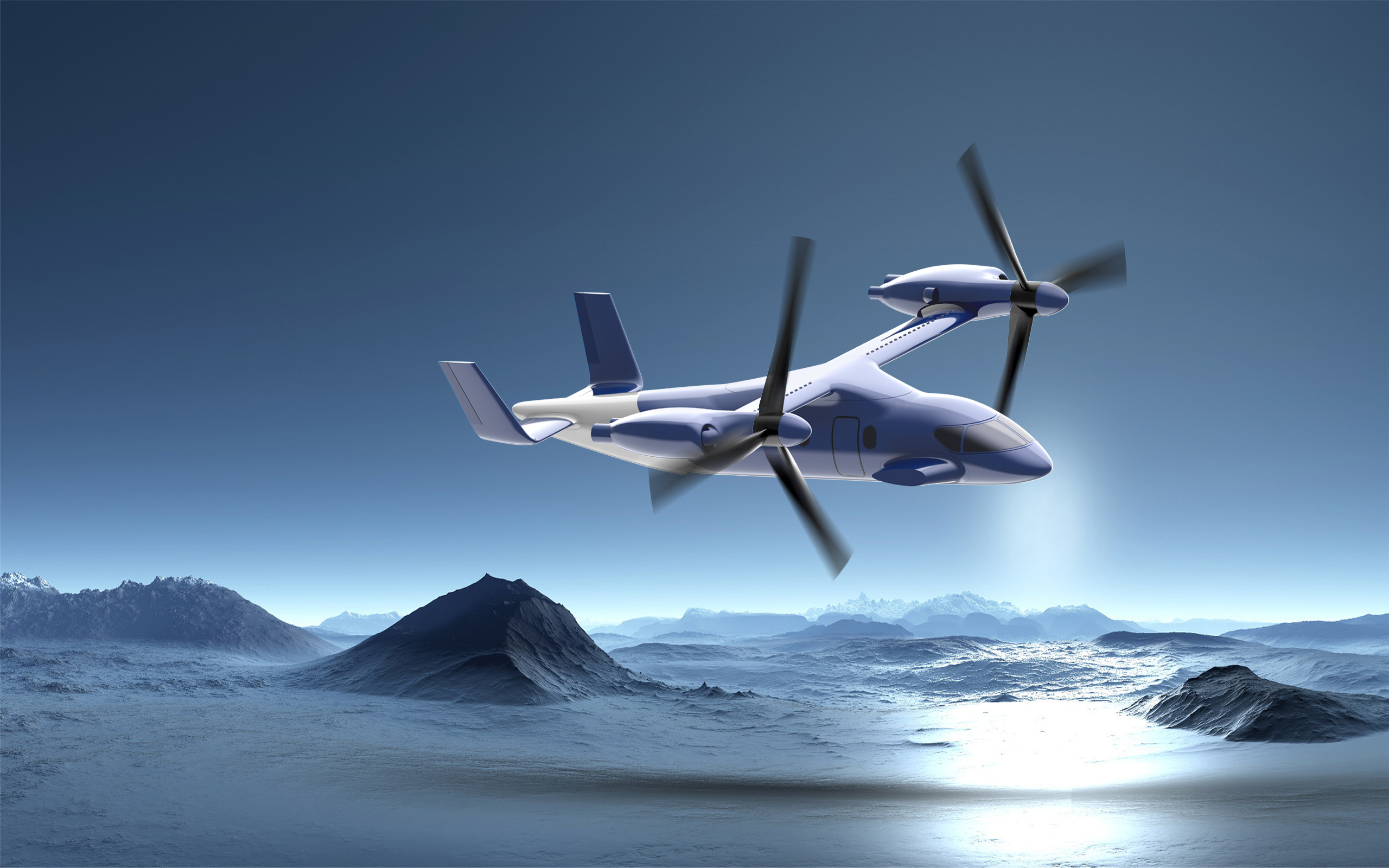China has revealed the first example of a new tiltrotor drone, United Aircraft’s UR6000, that has clear military potential, despite initially being pitched for civilian missions. The drone is notably large, providing a very useful load-carrying capability, and relatively offering high-speed and long-range.
The photo, seen at the top of this story, dated October 11, shows what is said to be the first completed UR6000 prototype on the production line at the Wuhu United Aircraft Production Workshop in the Wuhu Aviation Industrial Park in China’s eastern Anhui province. A placard in front of the aircraft states that this is “the first machine delivered off the line.” An official confirmed earlier this year that the project was at that time in the early prototyping phase.

The UR6000 project — also apparently known as the R6000 and as the Zhang Ying, or Steel Shadow — was originally launched at the Singapore Airshow earlier this year when a less-than-detailed conceptual model was presented.
Featuring high-mounted wings of constant chord, the UR6000 has tilting three-blade proprotors in engine nacelles mounted on the wingtips. It appears that the design has copied Bell’s new-generation tiltrotor technology, as used in the V-280 Valor, where instead of the whole nacelle rotating, only the front portion pivots. This solution is said to decrease complexity and increase reliability, as well as performance, compared with earlier tiltrotor concepts where the whole nacelle rotates, like on the V-22 Osprey.

The U-shaped tail has a plank-like horizontal tailplane with a large vertical stabilizer mounted on each end. Two large canard-like surfaces are mounted just aft of the cockpit. Although these appear to be mainly intended to accommodate the main landing gear, it’s possible they could perhaps also be used to mount smaller stores or sensors.
Initial concept artwork shows a large cargo door on the port side, located toward the aft section of the fuselage.
At this stage, the powerplant for the UR6000 is unclear, although it is certainly planned to be powered by turboshaft engines. Initial assessments suggest that each engine will be rated at between 1,500 and 2,000 horsepower and that a variable-speed gearbox is used to manage the different power requirements for vertical and horizontal flight modes.
United Aircraft has released some provisional specifications for the tiltrotor drone. These include a maximum takeoff weight of 13,448 pounds (6,100 kilograms), a payload capacity of 4,409 pounds (2,000 kilograms), a cruise speed of 432 miles an hour (550 kilometers an hour), a service ceiling of 25,000 feet (7,620 meters), and a maximum range of 932 miles (1,500 kilometers). How accurate these numbers end being is yet to be seen.
Reportedly, development of the UR6000 began in 2021 and certification is expected to be completed by 2027.
It seems the next milestone could be at the Zhuhai Air Show later this year, with reports that the prototype of the tiltrotor drone will be formally unveiled there.
The UR6000 is described by the manufacturer as an autonomous aerial vehicle (AAV), however, there are also reports that, in the longer term, the design will be adapted to carry up to 10 passengers as an alternative to cargo. That indicates that a larger crewed version of the tiltrotor is also envisaged.

At this stage, the tiltrotor drone is being pitched for civilian missions, although it would seem to have obvious military applications too.
At least one picture on United Aircraft’s website now shows the UR6000 in People’s Liberation Army (PLA) markings.

While United Aircraft is not among the largest Chinese aerospace entities, it does have considerable experience designing and building rotary-wing drones, including smaller quadcopters as well as larger types with coaxial rotor arrangements. These are primarily intended for logistics and surveillance, as well as firefighting and emergency response.
Perhaps the most striking aspect of the UR6000 is its size, with its maximum takeoff weight of over 13,000 pounds meaning that it’s in broadly the same category as the crewed Leonardo AW609 tiltrotor, although still considerably smaller than the V-22 Osprey, with its maximum gross weight of 52,000 pounds (in vertical takeoff and landing mode). Its accommodation for 10, passengers also compares closely with the AW609’s seating for up to 12 passengers in a high-density configuration.

In the military realm, the UR6000 also makes an interesting comparison with Bell’s V-247 Vigilant, which was originally pitched to meet the U.S. Marine Corps multirole, VTOL-capable drone program, known as MUX. The Marines wanted MUX to have a minimum internal payload capacity of 3,000 pounds, the ability to carry between 3,000 to 9,000 pounds of weapons or other stores externally, a cruising speed between 230 and 345 miles per hour, an unrefueled combat radius of 350 to 700 miles, and the ability to refuel in flight.
In its original form, the V-247 was designed with a maximum gross weight of over 30,000 pounds, but this has since been downsized to about 28,000 pounds to satisfy U.S. Navy requirements, including operating from smaller-deck warships. Vigilant’s long-range cruise is now listed as 240 knots with a maximum continuous cruising speed of 300 knots. Its redesigned internal mission payload is 2,000 pounds and it has a 9,000-pound slingload capacity.

It’s very possible that the PLA may order further specific military modifications of the UR6000 to suit its requirements. The tiltrotor could also join a growing family of fixed-wing Chinese transport drones that have dual-role civilian and military applications.
A tiltrotor drone, in particular, could well be suitable for a range of missions, especially in the Indo-Pacific theater, in which access to conventional airstrips would likely be limited in wartime and there is an enduring requirement to deliver cargoes to remote locations like Chinese island outposts in the South China Sea. While the U.S. military is increasingly looking at how to best address expeditionary missions in this environment, it’s also of huge importance for the PLA, as it seeks to expand its reach across the Pacific, including operations from small island airstrips as well as a growing fleet of amphibious assault ships that would be ideal platforms for the UR6000.
Potentially offering long-range and fast-cruising, as well as a significant payload capacity for a VTOL drone, the UR6000 is certainly an intriguing although somewhat familiar design. Moreover, it’s one that would appear to be eminently suited to island-hopping operations of the kind considered likely in a future large-scale conflict in the Indo-Pacific. Above all else, it shows China’s real interest in breaking into the larger tiltrotor realm.
Contact the author: thomas@thewarzone.com
